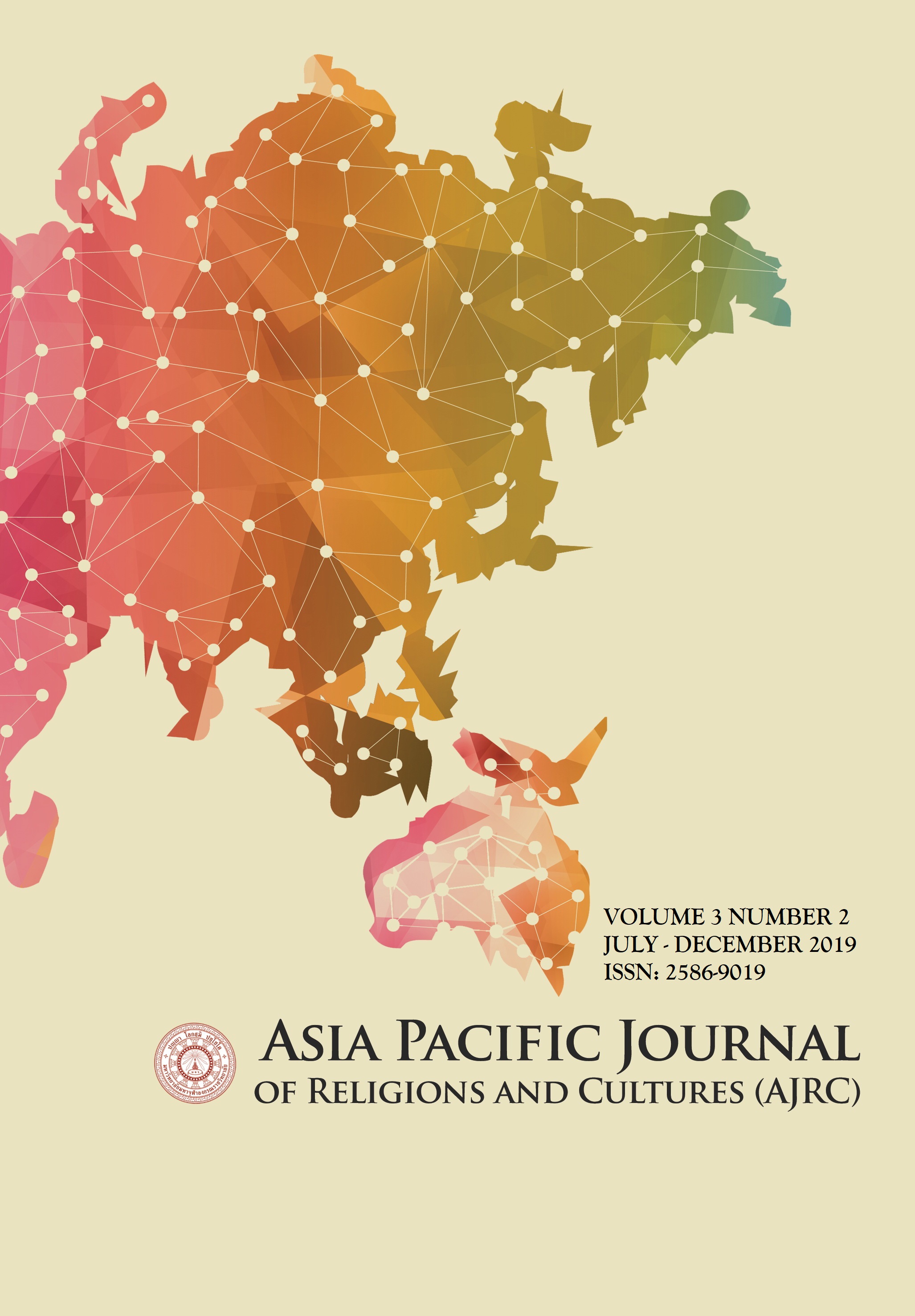The Buddhist Cultural Remains of Sri Ksetra
Main Article Content
Abstract
The Buddhist cultural remains of Sri Ksetra stand as the evolutional Buddhist art and architecture of first millennium AD not only for prolong life span of the city itself but also for regional Southeast Asia. They have been also venerated till today and taken care on physically by structural conservations in successive periods and attempted on the reveal of archaeological research. The present paper tries to note the brief different stages of religious structures such as stupas, temples and ritual halls of existing and excavated positions, and statuary finds of iconographic interests additionally epigraphic evidences of literate Buddhism. Furthermore the paper is alike to highlight these Buddhist cultural remains of Sri Ksetra have been evaluated into the outstanding universal value when Pyu Ancient Cities of Halin, Beikthano and Sri Ksetra were World Heritage Site enlisted.
Article Details
References
DOA. (2012). Nomination Dossier of Pyu Ancient Cities : Halin Beikthano and Sri Ksetra, 2012 Department of Archeology and National Museum, Ministry of Culture.
Duroiselle, Chas. (1925). Excavations at Hmawza, Report of the Archaeological Survey of India, 1924-25. Calcutta: Government of Central Publication Branch.
Duroiselle, Chas. (1925). “Excavations at Hmawza”, Annual Report of the Archaeological Survey of India, 1926_27, Delhi, Manager of Publication, 1927a.
Duroiselle, Chas. (1927). A Short Survey of the Religious aspect of the History of Burma Prior to the 11th Century AD, Annual Report of the Archaeological Survey of India 1926_27. Delhi: Manager of Publications.
Hudson, Bob . (2012). A thousand years before Bagan: radiocarbon dates and Myanmar‟s ancient Pyu cities (Revision 2). Early Myanmar and its Global Connections Conference. Bagan: Myanmar.
Kyaw Lat (2005). Vithuka Nhint Anu Pyinnyar Thamai (History and Theory of Art and Architecture). Yangon: Yaung Zin Press.
Luce, G. H. (1985). Phases of Pre-Pagan, Burma Languages and History. Vol. 1, Oxford University Press.
Moore, Elizebth H. (2007). Early landscape of Myanmar. Bangkok: River Books,
Moore, Elizebth H. (2008). Place and Space in Early Burma: A New Look at Pyu Culture. Journal of the Siam Society, 97.
Stargardt, Janice. (1990). The Ancient Pyu of Burma”, Volume One (Early Pyu Cities in A Man- Made Landscape), PACSEA Cambridge, ISEAS Singapore.
Jhon Guy. (eds). (2015). The Pyu Civilization of Myanmar and the City of Sri Ksetra. in Lost Kingdoms: Hindu-Buddhist Sculpture of Early Southeast Asia. pp. 63- 69. New York: The Metropolitan Museum of Art.
Miriam Stark and Stephen Murphy. (eds). (2016). From the Late Iron Age to Early Cities at Beikthano and Sri Ksetra, Myanmar. Journal of Southeast Asian Studies,47(3), 341-356.
Win Kyaing. (2012). A reconsidering of Bagan temple origin: a critical change of tradition and reappraisal on emergence of Bagan glory, Early Myanmar and its Global Connections Conference. Bagan.


